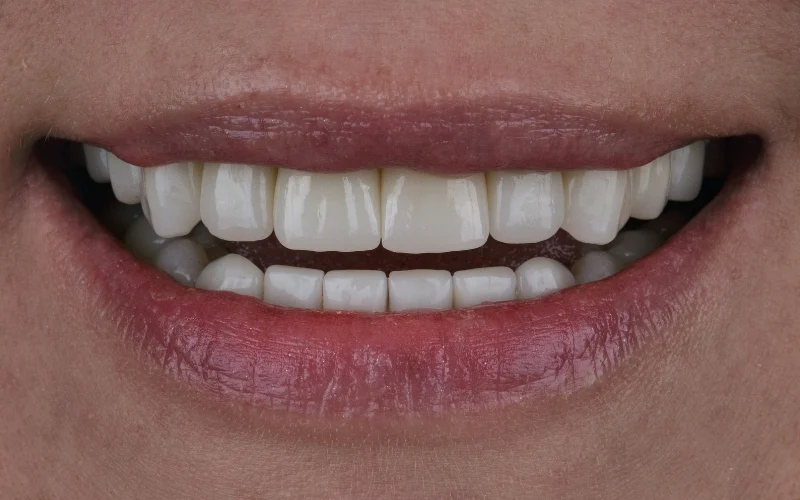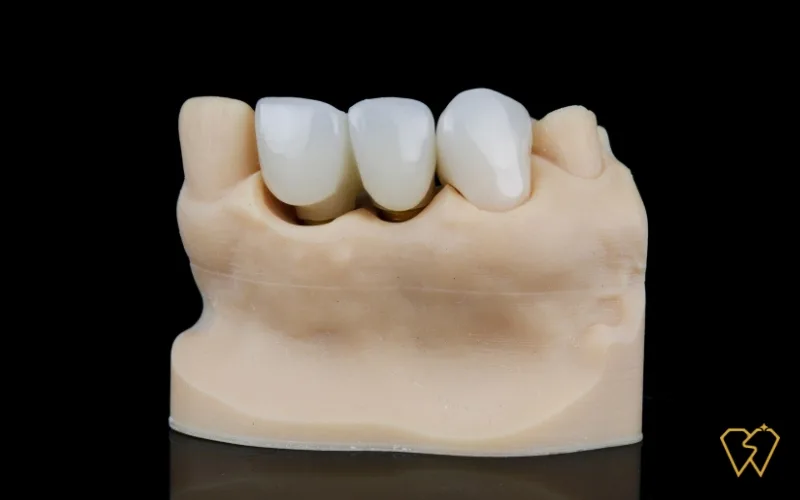The decision to have dental veneers installed is the first step to improving the appearance of your teeth and achieving the winning smile you’ve always wanted. The second step is choosing the material for the veneers either composite veneers or porcelain veneers.
Both products can expertly reshape your smile when used by a skilled cosmetic dentist. However, how can you tell which type is best for you? It all comes down to your requirements and the factors most important to you (cost, treatment time, etc.)
What are composite veneers, and what are they made up of?
Composite veneers, also known as direct veneers, are a type of dental restoration used to improve the appearance of teeth. They consist of a composite resin material molded and shaped directly onto the tooth surface.
For those who don’t know what resin is, it is a type of plastic. These composite veneers have a two to five years lifespan, are made of a less expensive substance than porcelain, and are attached straight to the teeth.
If you’re unhappy with the appearance of your teeth, composite dental veneers may be a good solution. The composite material in these veneers matches your teeth’ color.
Composite veneers pros
Quick application
The most significant benefit of composite veneers is that you can enter the dentist’s office with your natural teeth and leave with a brand-new smile. Everyone appreciates an effortless makeover. One key difference between composite and ceramic veneers is that the prior can be completed in just one visit to the dentist. In contrast, ceramic veneers require multiple visits for preparation and bonding.
Changes the way you smile
Want to alter the appearance of a tooth? Or want to hide a chipped front tooth with a complete renovation? Composite veneers might be the solution to your problems!
Compositive veneers can fulfill your desires, wants and goals, whether you’re looking for a modest adjustment or a major transformation. You’ll feel completely different when you leave the dentist’s office.
Less expensive option
Porcelain veneers are costly; let’s face it. But those seeking an alternative now have a less expensive choice owing to composite veneers. Therefore, you can achieve your goal of a beautiful smile without hurting your wallet.
Composite veneers cons
This type of teeth veneer isn’t the strongest option available. They are more likely to chip over time as compared to porcelain. Because composite is also more porous, staining over time may change the veneer’s color, giving it a different appearance from the surrounding teeth. Some other cons include the following:
Not the most beautiful
The final appearance may be less convincing than porcelain in terms of aesthetics.
Less durable
Their durability depends on the quality of the material used, the dentist’s skill, and how you care for them. Roughly, you should get them replaced after five years since the material may start to wear down, chip away, and stain.
Suitability
Good for one or two chipped teeth but not for major smile makeovers.
Longer treatment time
You may have to wait while the dentist carefully applies the composite layers and finishes them by polishing them. You will spend less time in the chair if you choose “no-prep” veneer solutions.
Procedure for getting composite veneers
Your dentist will begin the procedure by properly cleaning and prepping your teeth. The dentist might need to scrape away a tiny bit of enamel to help the substance adhere to your teeth. Your teeth may not always need to be trimmed if only modest shape or color adjustments are required.
Afterward, the procedure will be slightly different depending on whether you receive direct or indirect veneers.
For composite veneers, the composite resin material will then be attached to your teeth using an adhesive. Finally, the surface of your teeth is covered with incredibly thin layers of composite material.
The dentist will cure the layers of composite resin by using light. You are free to choose the color of your veneers. Your dentist can combine multiple colors to make your veneers look natural.
Many people do not need anesthesia when undergoing the procedure. But if you do, you will be able to go back to work or other regular activities without any problems after the anesthesia wears off.
Are there any risks involved?
As with any other treatment, certain risks are associated with getting composite veneers. You must be more cautious when applying pressure on the veneers to avoid any risks of them chipping off.
Additionally, the resin may come away from your natural tooth if an insufficient adhesive is used. However, this shouldn’t happen if you finish your procedure with a skilled and reputable cosmetic dentist. Porcelain veneers can also break or come off for the same reasons.
Removing tooth enamel comes with an additional risk: increased sensitivity. Following the procedure, you can notice more sensitive teeth. This should pass after some time, although any lingering sensitivity might persist.
Composite veneers aftercare
Fortunately, teeth veneers are more durable today than they once were. On average, this particular type of veneer can last 4 to 7 years. You’ll then require a fresh set of veneers. A set of porcelain veneers might last at least 10 or 15 years, a much longer lifespan.
You can extend the lifespan of composite materials by taking appropriate care.
Adopt a regular habit of brushing your teeth with a nonabrasive toothpaste, and repress the impulse to use your front teeth to chew on ice or other hard items.

Some dentists advise avoiding consuming beverages like coffee or tea that could stain your brand-new veneers.
Can you remove composite veneers?
The procedure is minimally invasive when using composite veneers, and the composite can be removed to restore the tooth to its original form. It is, therefore, the perfect option for people who want to permanently enhance the appearance of their teeth without changing their size or shape.
Because the teeth have been permanently altered and filed down, porcelain veneers cannot be removed. Porcelain veneers should only be removed when they are changed for new ones.
Difference between composite and porcelain veneers
Hopefully, you already have an idea of veneer types and the advantages that each has to offer. Let’s now focus on their main distinctions from one another.
Time difference
Every veneer type requires a different amount of time to apply. Composite veneers are unquestionably the faster choice. All that needs to be done is that the dentist places composite veneers on the patient’s teeth and fix and polishes them.
Conversely, porcelain veneers often require two to three visits. The dentist has to take many steps to ensure the procedure is carried out correctly.
Durability
Although composite veneers are relatively affordable, they typically only last 4 to 7 years before they need to be replaced. Despite their strength, composite resin veneers are much more likely to chip than porcelain veneers. On the plus side, composite veneers can be fixed if they get cracked.
Compare that durability to porcelain veneers, which, with proper maintenance, often last for 10-15 years. After bonding to your healthy teeth, the porcelain veneers shouldn’t be more prone to chips than your original teeth. However, unlike composite veneers, if your porcelain veneers are cracked or broken, they must be replaced entirely and cannot be restored.
The overall impression
Don’t get it wrong; composite and porcelain veneers both look fantastic! However, a side-by-side comparison reveals that porcelain veneers have a more natural appearance. This is because they reflect light similarly to how your natural teeth do.
Prices
As we already discussed, composite veneers are less expensive and more affordable than porcelain veneers. But you might be wondering, “Why is that?”
You’re not alone in asking this question. Other veneer types, such as porcelain, demand more time, are made of a more lasting substance, require a dentist with more skill, and cost much more money. When all of these things are taken into account, porcelain veneers are more expensive.
Composite veneers price
The cost of getting veneers is a factor you should think about. Veneers are not cheap.
Application of the veneers is one thing that takes the maximum time. Another reason is that you desire long-lasting materials and high-quality work. Everyone will notice the outcome as soon as you open your mouth. Composite veneers might still be expensive, even though they are less expensive than porcelain veneers.
The range of prices typically depends on where you reside, where your dental procedure is done, and how many veneers you require. The composite veneers price in Malaysia can range from RM350-500 per tooth.
At Stellar Dental, our team of experienced dental professionals can provide high-quality composite veneers at only RM450 per tooth. Click the button below to schedule a consultation today and see if this treatment is right for you. Our team is ready to help you achieve your dream smile with composite veneers.
Conclusion
In conclusion, composite veneers offer a quick and affordable solution for improving the appearance of your teeth. While they may not be as durable as ceramic veneers, they can still provide long-lasting results with proper care.








